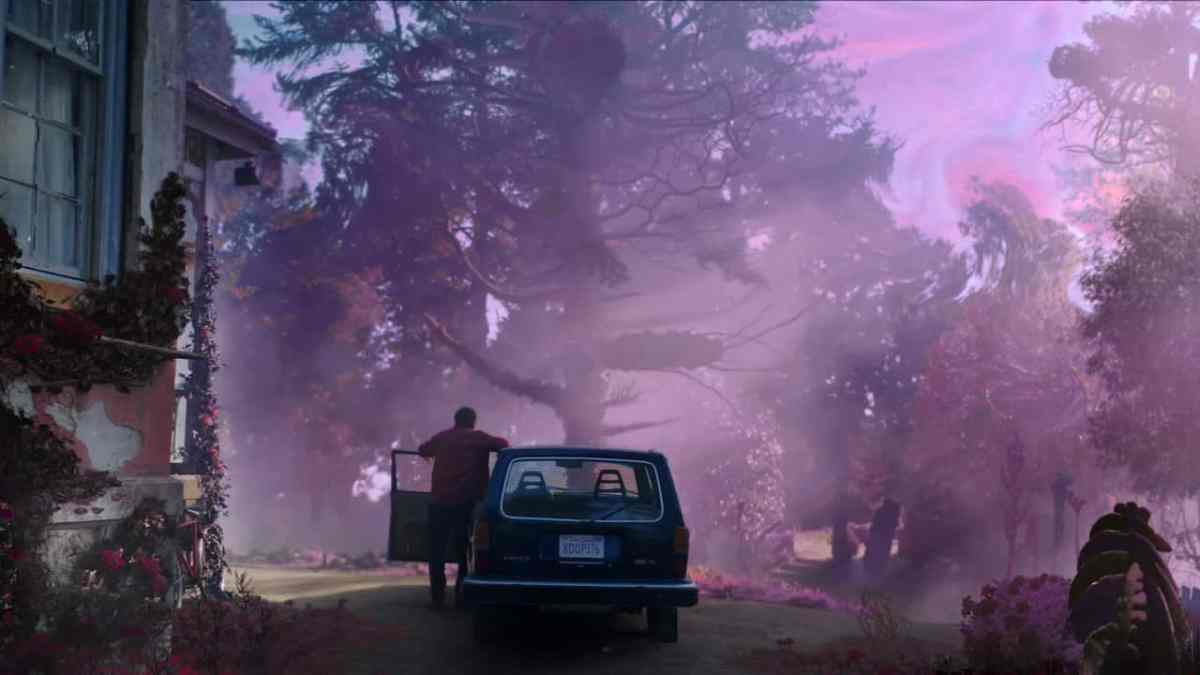Color Out of Space is three things that you don’t see very often, all working well together.
It is a rare cinematic adaptation of H.P. Lovecraft’s work, drawing on the short story of almost the same name. Despite Lovecraft’s status as one of the most important writers of American horror, there are few direct adaptations of his work. The most mainstream releases influenced by his stories — films like Reanimator, The Thing, and In the Mouth of Madness — tend to approach it from unique angles. Even Guillermo del Toro and Tom Cruise couldn’t get At the Mountains of Madness made.
It is also Richard Stanley’s first feature-length narrative film in over 20 years. The South African director emerged as one of the most striking horror directors of the ’80s and ’90s, working on films like Incidents in an Expanding Universe, Hardware, and Dust Devil. Unfortunately, Stanley then found himself in charge of an adaptation of The Island of Doctor Moreau. The details of that cursed production have been well-documented, but they effectively sentenced Stanley to two decades in “director jail.”
Finally, Color Out of Space is also a good Nicolas Cage movie. It seems funny to think that, in 1996 — the same year that Stanley was watching The Island of Doctor Moreau come apart — Cage won the Best Actor Oscar for his work in Leaving Las Vegas and was considered one of the greatest dramatic talents of his generation. While recent years have seen highlights like Bad Lieutenant: Port of Call New Orleans, Mom & Dad, and Mandy, Cage is now perhaps best known as the star of trashy (and often terrible) direct-to-video films.

Color Out of Space manages to bring together these three elements to create something truly remarkable. The film looks and feels like a cinematic horror throwback, an extended psychedelic nightmare that finds room for mutated alpacas and the philosophical musings of a character played by Tommy Chong. Most compellingly, Color Out of Space isn’t a radical departure from the cinematic oeuvres of those three individuals. Instead, it combines these elements into a heady cocktail.
Like the other major adaptations of Lovecraft’s work, Color Out of Space heavily reworks and reinvents the original story, while remaining true to its themes. Stanley is keenly aware of the challenges of adapting Lovecraft for the screen. After all, so much of Lovecraft’s horror hinges on concepts that can barely be articulated and so pose an obvious challenge to a cinematic narrative. However, Stanley retains Lovecraft’s core anxieties about concepts like transformation and primal forces.
Working as both writer and director, Stanley is able to craft a film that plays very specifically to his own strengths and interests. Color Out of Space is many things, but it is frequently a grotesque body horror of the kind that doesn’t really exist anymore. The film still uses computer-generated imagery to enhance its sense of weirdness and otherness, but it relies heavily on practical effects and makeup. It is rare to see this sort of craft employed on a modern horror film, but certainly welcome.
Finally, there’s Cage. Cage has become quite self-aware as a performer. He has admitted that he finds his “meme-ification” to be “frustrating,” while also openly discussing the process of generating a memorable “Cage Rage” performance.
Much like directors Panos Cosmatos (Mandy) and Brian Taylor (Mom & Dad), Stanley understands that Cage’s unique energy is an instrument rather than the entire orchestra. Color Out of Space channels Cage’s screen persona in such a way that his escalating performance is just one more level of unreality layered on top of all of the insanity around it. As with Mandy, Color Out of Space understands that a film needs to be loud to find a level where it is working with Cage rather than being drowned out by him.
The result is a gnarly horror film that feels like it comes from another world. This feels true to the spirit of the material.
Color Out of Space is in theaters in limited release now.
